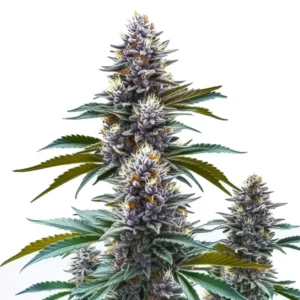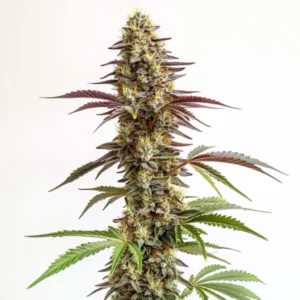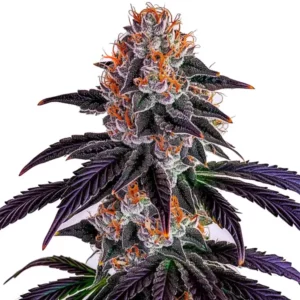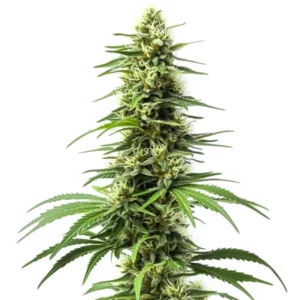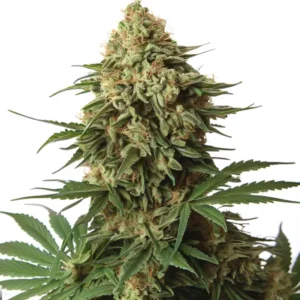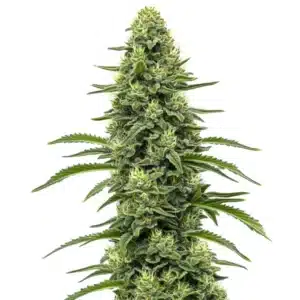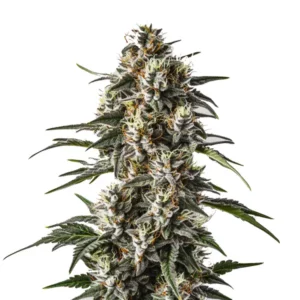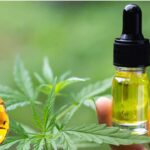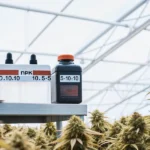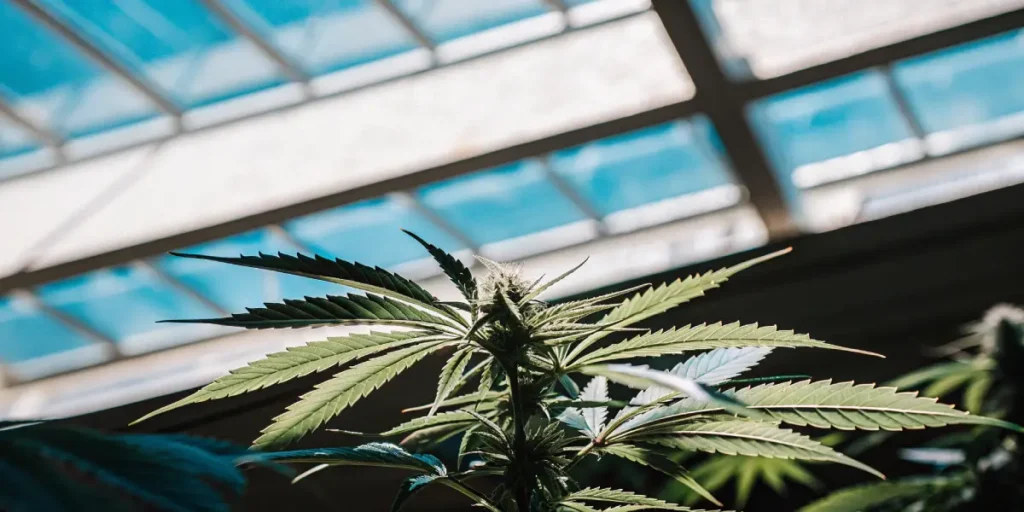
Nitrate Reductase Activity in Cannabis
Nitrate reductase activity in cannabis is a crucial factor in plant health. This enzyme plays a key role in converting nitrates into usable forms of nitrogen. Nitrogen is essential for cannabis plants, influencing everything from leaf growth to bud development. Without it, plants may struggle to thrive.
For those cultivating cannabis, knowing how this process works can lead to better yields. You can compare it to a chef needing the right ingredients to create a delicious dish. If the ingredients are lacking, the end result won’t be as satisfying. Similarly, if nitrate reductase activity is low, cannabis plants may grow poorly.
Recommended Strains
Blue Dream
|
|
THC | 17% - 24% (Medium) |
|
|
Type | Feminized |
|
|
Yield | High |
|
|
Phenotype | 50% Indica / 50% Sativa |
Green Crack
|
|
THC | 21% (Medium) |
|
|
Type | Feminized |
|
|
Yield | High |
|
|
Phenotype | 35% Indica / 65% Sativa |
Imagine choosing the right strain from Blimburn Seeds such as Green Crack, which thrives with proper nitrogen management. It’s like giving a sports car the right fuel. The better the fuel, the better the performance. Green Crack, with its vibrant growth and potent effects, benefits greatly from optimized nitrate reductase activity.
Nitrate Reductase’s Role in Cannabis Growth
The nitrate reductase enzyme in cannabis cultivation acts as a bridge. It converts nitrates, which are abundant in fertilizers, into ammonia. Ammonia becomes amino acids, the building blocks of proteins. Proteins are essential for growth, photosynthesis, and enzyme production in the plant.
Imagine your cannabis plant as a factory. The nitrate reductase enzyme is like the workers who transform raw materials into finished products. This enzyme ensures the plant has the resources to grow taller, produce more leaves, and develop robust buds. A lack of nitrate reductase activity in cannabis can slow this process down, leading to stunted growth.
Knowing the nitrate reductase role in cannabis growth can empower growers to make informed choices about nutrient applications. By ensuring that nitrate reductase activity in cannabis is maintained at optimal levels, cultivators can support the plant’s natural growth processes. This involves a delicate balance, as too much or too little enzyme activity can impact overall health.
Growers should also consider the timing of nutrient applications to maximize the benefits of nitrate reductase activity. During key growth phases, ensuring that the enzyme has the substrates it needs can be the difference between average and exceptional growth. This strategy helps in fostering a robust plant architecture, enhancing the plant’s ability to support heavy bud loads.
Promos & Deals
Effects of Nitrate Reductase on Cannabis Yield
Increased nitrate reductase activity in cannabis can lead to a higher yield. When this enzyme functions efficiently, the plant can produce more energy. More energy means more growth, and ultimately, more buds. This is especially important for growers looking to maximize their harvest.
Consider the strain Blue Dream from Blimburn Seeds. Known for its balanced effects and high yield, Blue Dream benefits when nitrate reductase activity is optimized. More efficient nitrogen use translates into more vigorous growth and a bountiful harvest. This can make the difference between a mediocre crop and a record-breaking yield.
The effects of nitrate reductase on cannabis yield are profound, as this enzyme directly influences the plant’s ability to synthesize amino acids and proteins. The more efficient this process, the more robust the plant’s development, leading to increased biomass and, consequently, more flowers. This enhances the overall commercial value of the crop, especially for strains prized for their yield.
Moreover, by focusing on optimizing nitrate reductase activity in cannabis, growers can reduce waste and improve nutrient efficiency. This not only contributes to a more sustainable cultivation practice but also ensures that resources are used effectively to boost production. Emphasizing the nitrate reductase enzyme in cannabis cultivation can thus be a key driver of success.
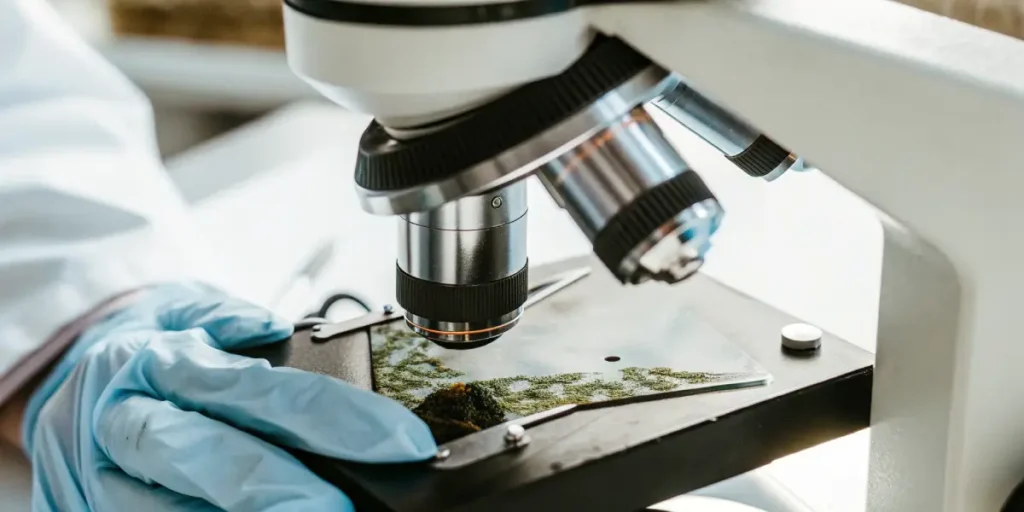
Measuring Nitrate Reductase in Cannabis Plants
To assess nitrate reductase activity in cannabis, growers can use simple tests. These tests measure enzyme levels in the plant tissue. By knowing these levels, you can adjust your nutrient plan to ensure optimal growth. It’s like checking the oil in your car to make sure the engine runs smoothly.
Regular testing can provide insights into how well your plants are processing nitrogen. If activity is low, it might be time to adjust your feeding schedule. The goal is to keep the nitrate reductase enzyme actively working, ensuring your plants have the nutrition they need.
Measuring nitrate reductase in cannabis plants not only helps in optimizing growth conditions but also serves as a diagnostic tool for potential nutrient deficiencies. By monitoring enzyme activity, growers can detect early signs of stress and take corrective actions before the plant’s health is compromised. This proactive approach helps in maintaining vigorous plant growth.
Another benefit of measuring nitrate reductase activity in cannabis is the ability to fine-tune fertilization strategies. With precise data, growers can tailor nutrient regimes that cater specifically to the plant’s needs, maximizing the efficiency of nutrient uptake and minimizing potential environmental impacts. This ensures that plants receive exactly what they need at each growth stage.
Enhancing Nitrate Reductase Activity in Cannabis
There are several ways to enhance nitrate reductase activity in cannabis. One method is through proper fertilization. Using fertilizers rich in nitrates can provide the raw materials needed for the enzyme to work. It’s similar to giving a chef high-quality ingredients to create a gourmet meal.
Another strategy involves environmental control. Ensuring that your cannabis plants have the right temperature and light conditions can boost enzyme activity. Think of it as creating the perfect environment for a plant to thrive, much like setting the right conditions for a seed to sprout.
Enhancing nitrate reductase activity in cannabis can also be achieved through the use of biostimulants. These substances, often derived from natural sources, can promote enzyme activity and improve nutrient uptake. They can be integrated into the cultivation process to provide an additional boost to the plant’s metabolic functions.
Furthermore, employing advanced cultivation techniques, such as precision agriculture, can significantly enhance enzyme activity. By using technology to monitor and adjust growing conditions in real-time, growers can create an ideal environment for nitrate reductase to thrive. This level of control can lead to substantial improvements in plant health and yield.
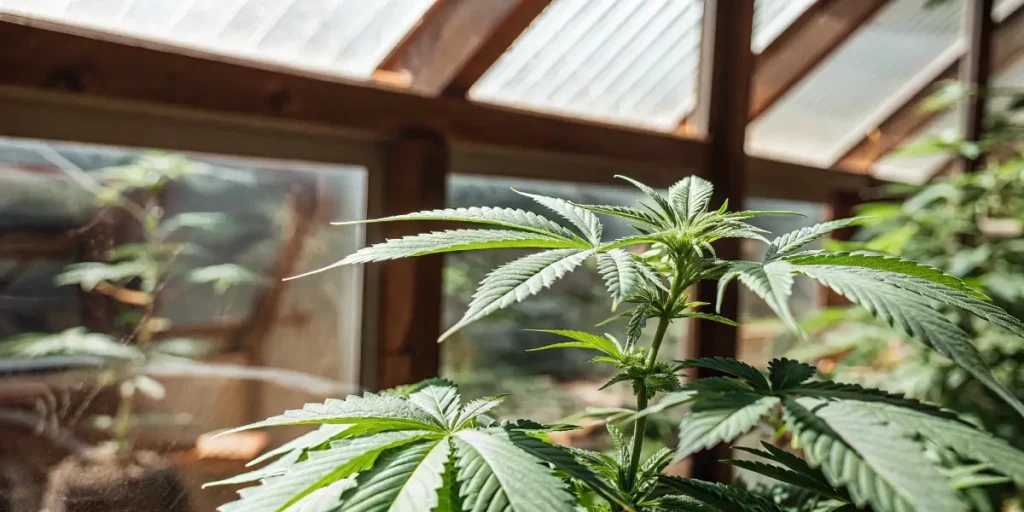
FAQs
What is nitrate reductase activity in cannabis?
Nitrate reductase activity in cannabis refers to the process where the enzyme nitrate reductase converts nitrate into nitrite, and eventually into ammonia. This process is essential for nitrogen assimilation in the plant, which is critical for growth and development.
Nitrate reductase activity is vital for healthy plant growth. Without it, cannabis plants may not be able to use the nitrogen available in the soil effectively. This can lead to poor growth and lower yields, emphasizing the importance of this enzyme in cannabis cultivation.
The nitrate reductase enzyme in cannabis cultivation is a linchpin in the nitrogen cycle within the plant. Proper functioning of this enzyme ensures that the plant can maintain its metabolic processes efficiently, supporting everything from cell division to overall vigor. This makes understanding and optimizing enzyme activity crucial for successful cultivation.
In the context of modern agriculture, nitrate reductase activity in cannabis serves as a benchmark for evaluating a plant’s nutrient status. By ensuring that this enzyme is operating at its peak, growers can achieve a balance between growth demands and nutrient supply, leading to healthier plants and improved yields.
How does nitrate reductase impact cannabis yield?
The effects of nitrate reductase on cannabis yield are significant. When nitrate reductase activity is high, plants can use nitrogen more effectively, leading to better growth and more abundant flowering. This results in higher yields, which is a primary goal for most cannabis growers.
Growers focusing on yield optimization should pay attention to nitrate reductase activity. By ensuring this enzyme is functioning at its best, you can help your cannabis plants produce more buds and reach their full potential, ultimately benefiting your harvest.
The impact of nitrate reductase activity in cannabis on yield is further amplified when combined with other optimized cultivation practices. By aligning nutrient management with precise environmental controls, the full potential of nitrate reductase can be harnessed, leading to even greater increases in yield and quality.
Moreover, the effects of nitrate reductase on cannabis yield extend beyond quantity. Enhanced enzyme activity can also improve the quality of the produce by ensuring that the plant has the necessary resources to develop secondary metabolites, which contribute to the aroma, flavor, and potency of cannabis.
Can nitrate reductase activity be increased?
Yes, enhancing nitrate reductase activity in cannabis is possible. Proper fertilization, environmental control, and cultivation techniques can all contribute to increased enzyme activity. Adjusting these factors can help improve nitrogen assimilation and promote healthier growth.
Growers should experiment with different strategies to boost nitrate reductase activity. Whether it’s adjusting nutrient levels or optimizing growing conditions, small changes can lead to significant improvements in plant health and yield.
Increasing nitrate reductase activity in cannabis involves not only external inputs but also genetic considerations. Selecting strains that naturally exhibit high enzyme activity can lay the groundwork for more efficient nitrogen use. Breeding programs focused on enhancing this trait can provide long-term benefits to cultivation efforts.
Incorporating microbial inoculants into the soil is another method to boost nitrate reductase activity in cannabis. These beneficial microbes can enhance nutrient availability and promote a conducive environment for enzyme action, leading to improved plant health and productivity.
Why is measuring nitrate reductase in cannabis important?
Measuring nitrate reductase in cannabis plants provides valuable insights into how well your plants are utilizing nitrogen. By understanding enzyme activity levels, you can make informed decisions about fertilization and cultivation practices.
Regular measurement can help identify any potential issues early, allowing growers to adjust their strategies accordingly. This ensures that plants receive the nutrients they need to grow strong and produce a bountiful harvest.
Through accurate measurement of nitrate reductase activity in cannabis, growers can customize their cultivation practices to align with the specific needs of their plants. This tailored approach not only optimizes growth but also helps in conserving resources by eliminating unnecessary nutrient applications.
Furthermore, measuring nitrate reductase activity provides a scientific basis for evaluating the effectiveness of different cultivation techniques. By comparing enzyme activity across various methods, growers can identify the most successful strategies for their specific conditions, leading to more efficient and productive cultivation.
Which cannabis strains benefit from optimized nitrate reductase activity?
Strains like Green Crack, Blue Dream, and Tangie from Blimburn Seeds are known for their vigorous growth and high yields. These strains benefit significantly from optimized nitrate reductase activity, as it ensures efficient nitrogen use, leading to healthier plants and better yields.
By focusing on nitrate reductase activity in these strains, growers can achieve impressive results. Whether you’re a novice or an experienced cultivator, optimizing this enzyme’s activity can enhance the overall success of your cannabis cultivation efforts.
Strains with naturally high growth rates and nutrient demands are particularly responsive to enhanced nitrate reductase activity in cannabis. These include hybrids and sativa-dominant strains known for their expansive canopies and substantial biomass production, making them ideal candidates for optimized nutrient management.
Additionally, strains bred for specific environmental conditions, such as those requiring high light levels or warmer temperatures, can also benefit greatly from increased nitrate reductase activity. By aligning enzyme optimization with strain characteristics, growers can achieve peak performance and superior crop outcomes.






